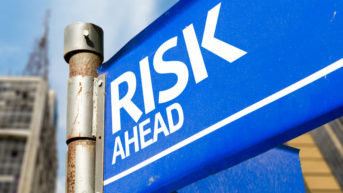Alaris Royalty (TSX:AD) reported its Q3 results on Monday, and the stock declined 6.8% on Tuesday. At the market close of $18.26 per share, Alaris yields 8.87%. Is its dividend sustainable? Let’s first take a look at its recent results.
Recent results
Year over year for Q3, Alaris’ revenue declined 4.6% to $22.7 million, normalized earnings before interest, taxes, depreciation, and amortization (EBITDA) decreased by 2.6% to $20.2 million, and net cash from operating activities dropped 24.4% to $16.6 million.
The nine-month results were much better with revenue growth of 10.9% to $74.8 million, normalized EBITDA growth of 4.7% to $60.7 million, and net cash from operating activities growth of 16.7% to $60.7 million.
Although Alaris did not book any bad debt expense in Q3, in the first nine months of the year, it booked bad debt expense of nearly $26 million, which was 2.6 times as much as the same period in 2017. This has no doubt affected Alaris’ bottom line as the stock has corrected about 12% year to date.

Is the big dividend sustainable?
In the first nine months of this year, Alaris reported normalized diluted earnings per share of $1.46, which indicated a normalized payout ratio of 83%.
Management estimates a run-rate net cash flow of $1.73 per share, which would imply a payout ratio of just under 94%. The company’s payout ratio was in the range of 80% and 94% between 2013 and 2017. Although the payout ratio is high, the dividend is sustainable for now.
The business
Alaris lends money to private businesses in the form of non-voting preferred equity. This allows the owners of the businesses to remain fully in charge of and focus on the long-term goals of their businesses.
In turn, Alaris gets large monthly cash distributions from the preferred equity investments. This ensures Alaris gets a return on its investments periodically without having to rely on an exit event, such as the private businesses buying back the preferred equity.
Investor takeaway
With any high-yield stocks that you come across, know the potential risks that come with them and decide if it’s worth investing your money. In the case of Alaris, although its monthly dividend is sustainable for now, there’s the risk that it’ll cut the dividend if further issues arise from its revenue streams.
For Q3, Alaris had two out of a total 15 revenue streams, which didn’t have enough earnings to cover for their cash distributions to Alaris. In fact, one of the streams, Kimco, had suspended its distribution to Alaris since the end of September.
On top of the two streams, there were three streams which had the minimum coverage with earnings coverage ratios of 1.0-1.2 times. If things turned south for these streams, it would increase the risk of a dividend cut at Alaris.
That said, Alaris has strong insider (i.e., directors and officers) ownership of about 10%. So, it’s in the best interest of management to do their best to maintain the dividend.







